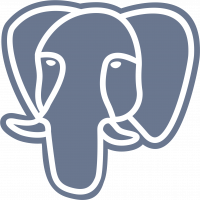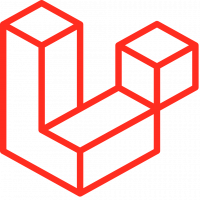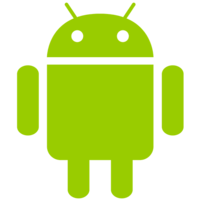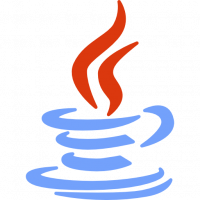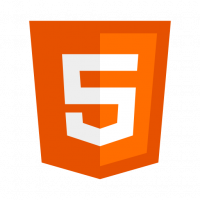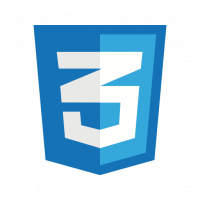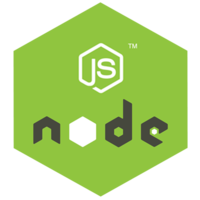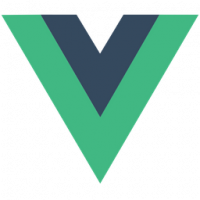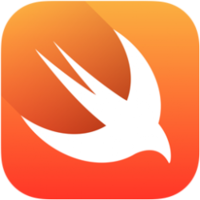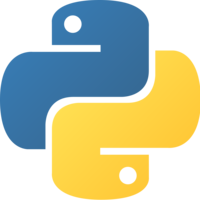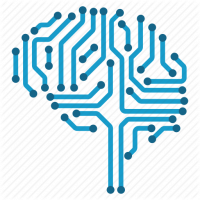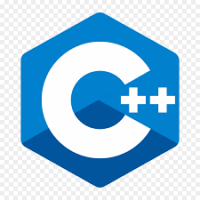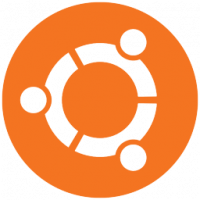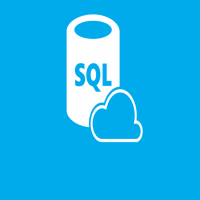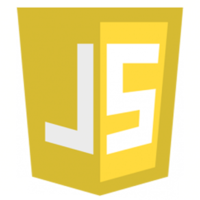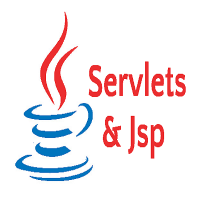- Bài 1: Giới thiệu Flutter
- Bài 2: Cài đặt Flutter
- Bài 3: Tạo ứng dụng Flutter đầu tiên
- Bài 4: Kiến trúc ứng dụng Flutter
- Bài 5: Giới thiệu ngôn ngữ Dart
- Bài 6: Widget trong Flutter
- Bài 7: Layout trong Flutter
- Bài 8: Gesture trong Flutter
- Bài 9: Quản lý trạng thái Sate trong Flutter
- Bài 10: Statefulwidget trong Flutter
- Bài 11: ScopedModel trong Flutter
- Bài 12: Navigator và Routing
- Bài 13: Animation
- Bài 14: Code với native Android
- Bài 15: Code với native IOS
- Bài 16: Giới thiệu về package
- Bài 17: REST API
- Bài 18: Khái niệm về Database
- Bài 19: Chuyển đổi ngôn ngữ
- Bài 20: Testing
- Bài 21: Xuất ứng dụng trong Flutter
- Bài 22: Công cụ phát triển
- Bài 23: Viết ứng dụng hoàn chỉnh
Bài 17: REST API - Học lập trình Flutter cơ bản
Đăng bởi: Admin | Lượt xem: 19547 | Chuyên mục: Android
Flutter cung cấp package http để sử dụng nguồn HTTP . http là một thư viện Future-based sử dụng tính năng await và async. Nó cung cấp phương thức cấp cao và đơn giản để phát triển REST trên ứng dụng di động.
Nội dung cơ bản :
Gói http cung cấp các lớp cấp cao và http request từ web
- Lớp http cung cấp chức năng để làm việc với tất cả các kiểu dữ liệu HTTP được request
- Phương thức http có sử dụng url , và bổ sung thông tin thông qua Dart Map ( post dữ liệu, bổ sung tiêu đề, ...). Nó yêu cầu lên máy chủ và thu thập phản hồi với async/await. Ví dụ đoạn code dưới đây đọc dữ liệu từ url và in nó trên console
print(await http.read('https://flutter.dev/'));Một vài phương thức chính :
- read : gởi yêu cầu lên sever thông qua phương thức GET và trả về Future<String>
- get : gởi yêu cầu lên sever thông qua phương thức GET và trả về Future<Response>. Response là lớp giữ lại các thông tin phản hồi
- post : gởi yêu cầu lên sever thông qua phương thức POST bằng việc đưa giá trị lên sever và phản hồi Future<Response>
- put : gởi yêu cầu lên sever thông qua phương thức PUT và trả về phản hồi như Future<Response>
- head : gởi yêu cầu lên sever thông qua phương thức HEAD và trả về phản hồi như Future<Response>
- delete : gởi yêu cầu lên sever thông qua phương thức DELETE và trả về phản hồi như Future<Response>
Http cũng cung cấp nhiều lớp standard HTTP client. client có nhiệm vụ hỗ trợ kết nối. Nó sẽ hữu ích khi có rất nhiều request lên sever
var client = new http.Client();
try {
print(await client.get('https://flutter.dev/'));
}
finally {
client.close();
}Truy cập vào Product service API
Ta sẽ tạo ứng dụng đơn giản để lấy dữ liệu Product từ web server và sau đó hiển thị danh sách Product trong ListView
Tạo ứng dụng Flutter trong android với tên "product_rest_app"
Copy assets dưới đây vào pubspec.yaml ,(các bạn có thể lấy ảnh ở bài 7 )
flutter:
assets:
- assets/appimages/floppy.jpg
- assets/appimages/iphone.jpg
- assets/appimages/laptop.jpg
- assets/appimages/pendrive.jpg
- assets/appimages/pixel.jpg
- assets/appimages/tablet.jpgThêm http package vào file pubspec.yaml như sau :
dependencies:
http: ^0.12.0+2Thêm một vào package trong hàm main.dart
import 'dart:async';
import 'dart:convert';
import 'package:http/http.dart' as http;Tạo file JSON, product.json
[
{
"name": "iPhone",
"description": "iPhone is the stylist phone ever",
"price": 1000,
"image": "iphone.png"
},
{
"name": "Pixel",
"description": "Pixel is the most feature phone ever",
"price": 800,
"image": "pixel.png"
},
{
"name": "Laptop",
"description": "Laptop is most productive development tool",
"price": 2000,
"image": "laptop.png"
},
{
"name": "Tablet",
"description": "Tablet is the most useful device ever for meeting",
"price": 1500,
"image": "tablet.png"
},
{
"name": "Pendrive",
"description": "Pendrive is useful storage medium",
"price": 100,
"image": "pendrive.png"
},
{
"name": "Floppy Drive",
"description": "Floppy drive is useful rescue storage medium",
"price": 20,
"image": "floppy.png"
}
]Tạo thư mục mới tên là JSONWebServer , đặt products.json vào trong
Chạy bất kì web server với JSONWebServer và lấy đường dẫn. Ví dụ http://192.168.184.1:8000/products.json. Một vài web server như apache, nginx, ...
Cách đơn giản nhất là cài đặt nodejs dựa trên ứng dụng http-server. Các bước cài đặt như sau :
- Cài đặt ứng dụng NodeJs https://nodejs.org/en
- Đi đến thư mục JSONWebServer
cd /path/to/JSONWebServer- Cài đặt http-server package bằng cách sử dụng npm
npm install -g http-server- Sau đó thử chạy server
http-server . -p 8000
Starting up http-server, serving .
Available on:
http://192.168.99.1:8000
http://127.0.0.1:8000
Hit CTRL-C to stop the serverTạo file mới Product.dart trong lớp Product
Viết factory constructor trong lớp Product , Product.fromMap dùng để chuyển đổi dữ liệu map trong đối tượng Product . Thông thường, tệp JSON sẽ được chuyển đổi bên trong đối tượng Dart Map và sau đó chuyển đổi sang đối tượng liên qua (Product)
factory Product.fromJson(Map<String, dynamic> data) {
return Product(
data['name'],
data['description'],
data['price'],
data['image'],
);
}Code trong hàm product.dart như sau :
class Product {
final String name;
final String description;
final int price;
final String image;
Product(this.name, this.description, this.price, this.image);
factory Product.fromMap(Map<String, dynamic> json) {
return Product(
json['name'],
json['description'],
json['price'],
json['image'],
);
}
}Bây giờ ta sẽ viết 2 phương thức - parseProducts và fetchProducts - trong lớp chính để lấy và tải thông tin sản phẩm từ web server(máy chủ) trong List<Product>
List<Product> parseProducts(String responseBody) {
final parsed = json.decode(responseBody).cast<Map<String, dynamic>>();
return parsed.map<Product>((json) =>Product.fromJson(json)).toList();
}
Future<List<Product>> fetchProducts() async {
final response = await http.get('http://192.168.1.2:8000/products.json');
if (response.statusCode == 200) {
return parseProducts(response.body);
} else {
throw Exception('Unable to fetch products from the REST API');
}
}Ta nên lưu ý một vài điểm sau :
-Future được sử dụng để trì hoãn việc tải thông tin sản phẩm cho đến khi cần thiết
- http.get được dùng để lấy dữ liệu từ internet
- json.decode được sử dụng để dịch dữ liệu JSON trong Dart Map. Mỗi một dữ liệu JSON được dịch , nó sẽ chuyển vào List<Product> bằng fromMap của lớp Product
Trong lớp MyApp, thêm giá trị product mới, các product thuộc kiểu Future<Product> và đưa vào hàm constructor
class MyApp extends StatelessWidget {
final Future<List<Product>> products;
MyApp({Key key, this.products}) : super(key: key);
...Trong lớp MyHomePage, thêm một vài Product thuộc kiểu Future<Product> và đưa vào constructor .
class MyHomePage extends StatelessWidget {
final String title;
final Future<ListList<Product>> products;
MyHomePage({Key key, this.title, this.products}) : super(key: key);
... Trong widget home (MyHomePage) thay đổi như sau
home: MyHomePage(title: 'Product Navigation demo home page', products: products),Thay đổi hàm chính trên StateFullWidge
void main() => runApp(MyApp(fetchProduct()));Tạo widget mới là ProductBoxList để xây dựng list Product trong home page
class ProductBoxList extends StatelessWidget {
final List<Product> items;
ProductBoxList({Key key, this.items});
@override
Widget build(BuildContext context) {
return ListView.builder(
itemCount: items.length,
itemBuilder: (context, index) {
return GestureDetector(
child: ProductBox(item: items[index]),
onTap: () {
Navigator.push(
context, MaterialPageRoute(
builder: (context) =gt; ProductPage(item: items[index]),
),
);
},
);
},
);
}
}Lưu ý rằng, chúng ta sử dụng cùng nội dung trong ứng dụng Navigation để đưa ra list Product
Cuối cùng ta sửa đổi MyHomePage widget's để lấy thông tin Product sử dụng tính năng Future thay vì phương thức gọi thông thường
Widget build(BuildContext context) {
return Scaffold(
appBar: AppBar(title: Text("Product Navigation")),
body: Center(
child: FutureBuilder<List<Product>>(
future: products, builder: (context, snapshot) {
if (snapshot.hasError) print(snapshot.error);
return snapshot.hasData ? ProductBoxList(items: snapshot.data)
// return the ListView widget :
Center(child: CircularProgressIndicator());
},
),
)
);
}- Ở đây ta đã sử dụng widget FutureBuilder để render widget . FutureBuilder sẽ cố lấy dữ liệu từ thuộc tính future (thuộc Future<List<Product>>) . Nếu thuộc tính future trả dữ liệu về , nó sẽ render widget sử dụng ProductBoxList , mặt khác sẽ ném lỗi(throw err)
Toàn bộ code trong hàm main.dart như dưới đây :
import 'package:flutter/material.dart';
import 'dart:async';
import 'dart:convert';
import 'package:http/http.dart' as http;
import 'Product.dart';
void main() => runApp(MyApp(products: fetchProducts()));
List<Product> parseProducts(String responseBody) {
final parsed = json.decode(responseBody).cast<Map<String, dynamic>>();
return parsed.map<Product>((json) => Product.fromMap(json)).toList();
}
Future<List<Product>> fetchProducts() async {
final response = await http.get('http://192.168.1.2:8000/products.json');
if (response.statusCode == 200) {
return parseProducts(response.body);
} else {
throw Exception('Unable to fetch products from the REST API');
}
}
class MyApp extends StatelessWidget {
final Future<List<Product>> products;
MyApp({Key key, this.products}) : super(key: key);
// This widget is the root of your application.
@override
Widget build(BuildContext context) {
return MaterialApp(
title: 'Flutter Demo',
theme: ThemeData(
primarySwatch: Colors.blue,
),
home: MyHomePage(title: 'Product Navigation demo home page', products: products),
);
}
}
class MyHomePage extends StatelessWidget {
final String title;
final Future<List<Product>> products;
MyHomePage({Key key, this.title, this.products}) : super(key: key);
// final items = Product.getProducts();
@override
Widget build(BuildContext context) {
return Scaffold(
appBar: AppBar(title: Text("Product Navigation")),
body: Center(
child: FutureBuilder<List<Product>>(
future: products, builder: (context, snapshot) {
if (snapshot.hasError) print(snapshot.error);
return snapshot.hasData ? ProductBoxList(items: snapshot.data)
// return the ListView widget :
Center(child: CircularProgressIndicator());
},
),
)
);
}
}
class ProductBoxList extends StatelessWidget {
final List<Product> items;
ProductBoxList({Key key, this.items});
@override
Widget build(BuildContext context) {
return ListView.builder(
itemCount: items.length,
itemBuilder: (context, index) {
return GestureDetector(
child: ProductBox(item: items[index]),
onTap: () {
Navigator.push(
context, MaterialPageRoute(
builder: (context) => ProductPage(item: items[index]),
),
);
},
);
},
);
}
}
class ProductPage extends StatelessWidget {
ProductPage({Key key, this.item}) : super(key: key);
final Product item;
@override
Widget build(BuildContext context) {
return Scaffold(
appBar: AppBar(title: Text(this.item.name),),
body: Center(
child: Container(
padding: EdgeInsets.all(0),
child: Column(
mainAxisAlignment: MainAxisAlignment.start,
crossAxisAlignment: CrossAxisAlignment.start,
children: <Widget>[
Image.asset("assets/appimages/" + this.item.image),
Expanded(
child: Container(
padding: EdgeInsets.all(5),
child: Column(
mainAxisAlignment: MainAxisAlignment.spaceEvenly,
children: <Widget>[
Text(this.item.name, style:
TextStyle(fontWeight: FontWeight.bold)),
Text(this.item.description),
Text("Price: " + this.item.price.toString()),
RatingBox(),
],
)
)
)
]
),
),
),
);
}
}
class RatingBox extends StatefulWidget {
@override
_RatingBoxState createState() =>_RatingBoxState();
}
class _RatingBoxState extends State<RatingBox> {
int _rating = 0;
void _setRatingAsOne() {
setState(() {
_rating = 1;
});
}
void _setRatingAsTwo() {
setState(() {
_rating = 2;
});
}
void _setRatingAsThree() {
setState(() {
_rating = 3;
});
}
Widget build(BuildContext context) {
double _size = 20;
print(_rating);
return Row(
mainAxisAlignment: MainAxisAlignment.end,
crossAxisAlignment: CrossAxisAlignment.end,
mainAxisSize: MainAxisSize.max,
children: <Widget>[
Container(
padding: EdgeInsets.all(0),
child: IconButton(
icon: (
_rating >= 1
? Icon(Icons.star, ize: _size,)
: Icon(Icons.star_border, size: _size,)
),
color: Colors.red[500], onPressed: _setRatingAsOne, iconSize: _size,
),
),
Container(
padding: EdgeInsets.all(0),
child: IconButton(
icon: (
_rating >= 2
? Icon(Icons.star, size: _size,)
: Icon(Icons.star_border, size: _size, )
),
color: Colors.red[500],
onPressed: _setRatingAsTwo,
iconSize: _size,
),
),
Container(
padding: EdgeInsets.all(0),
child: IconButton(
icon: (
_rating >= 3 ?
Icon(Icons.star, size: _size,)
: Icon(Icons.star_border, size: _size,)
),
color: Colors.red[500],
onPressed: _setRatingAsThree,
iconSize: _size,
),
),
],
);
}
}
class ProductBox extends StatelessWidget {
ProductBox({Key key, this.item}) : super(key: key);
final Product item;
Widget build(BuildContext context) {
return Container(
padding: EdgeInsets.all(2), height: 140,
child: Card(
child: Row(
mainAxisAlignment: MainAxisAlignment.spaceEvenly,
children: <Widget>[
Image.asset("assets/appimages/" + this.item.image),
Expanded(
child: Container(
padding: EdgeInsets.all(5),
child: Column(
mainAxisAlignment: MainAxisAlignment.spaceEvenly,
children: <Widget>[
Text(this.item.name, style:TextStyle(fontWeight: FontWeight.bold)),
Text(this.item.description),
Text("Price: " + this.item.price.toString()),
RatingBox(),
],
)
)
)
]
),
)
);
}
}Okeyy, chạy ứng dụng và xem kết quả nhé. Nó sẽ cho ra cùng kết quả như ứng dụng Navigator(ở bài 12) nhưng dữ liệu được lấy từ internet thay vì local. Chúc các bạn học tốt!

Theo dõi VnCoder trên Facebook, để cập nhật những bài viết, tin tức và khoá học mới nhất!
- Bài 1: Giới thiệu Flutter
- Bài 2: Cài đặt Flutter
- Bài 3: Tạo ứng dụng Flutter đầu tiên
- Bài 4: Kiến trúc ứng dụng Flutter
- Bài 5: Giới thiệu ngôn ngữ Dart
- Bài 6: Widget trong Flutter
- Bài 7: Layout trong Flutter
- Bài 8: Gesture trong Flutter
- Bài 9: Quản lý trạng thái Sate trong Flutter
- Bài 10: Statefulwidget trong Flutter
- Bài 11: ScopedModel trong Flutter
- Bài 12: Navigator và Routing
- Bài 13: Animation
- Bài 14: Code với native Android
- Bài 15: Code với native IOS
- Bài 16: Giới thiệu về package
- Bài 17: REST API
- Bài 18: Khái niệm về Database
- Bài 19: Chuyển đổi ngôn ngữ
- Bài 20: Testing
- Bài 21: Xuất ứng dụng trong Flutter
- Bài 22: Công cụ phát triển
- Bài 23: Viết ứng dụng hoàn chỉnh
